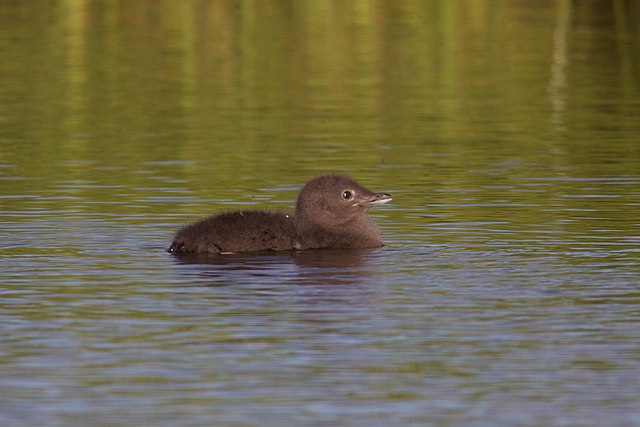The red-throated loon or red-throated diver is a migratory aquatic bird found in the northern hemisphere. The most widely distributed member of the loon or diver family, it breeds primarily in Arctic regions, and winters in northern coastal waters. Ranging from 55 to 67 centimetres in length, the red-throated loon is the smallest and lightest of the world's loons. In winter, it is a nondescript bird, greyish above fading to white below. During the breeding season, it acquires the distinctive reddish throat patch which is the basis for its common name. Fish form the bulk of its diet, though amphibians, invertebrates, and plant material are sometimes eaten as well. A monogamous species, red-throated loons form long-term pair bonds. Both members of the pair help to build the nest, incubate the eggs, and feed the hatched young.
Red-throated loon
An adult in non-breeding plumage shows the speckled back which gives the bird its specific name.
In breeding plumage, the adult shows the red throat that gives the species its common name.
Very young birds are covered with dark brown or grey down feathers.
Loons or divers are a group of aquatic birds found in much of North America and northern Eurasia. All living species of loons are members of the genus Gavia, family Gaviidae and order Gaviiformes.
Loon
1918 illustration of a variety of loons by Archibald Thorburn. Top: Common loon, Mid-left: red-throated loon, Mid-right: yellow-billed loon, Bottom: black-throated loon
Common loon (Gavia immer) rearing up. Note the plump body and pointed but rather short wings
Yellow-billed loon (Gavia adamsii) in winter plumage








